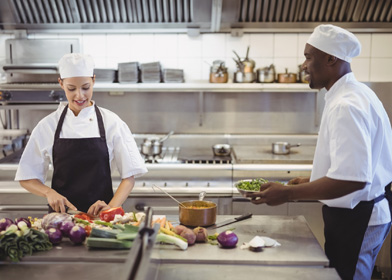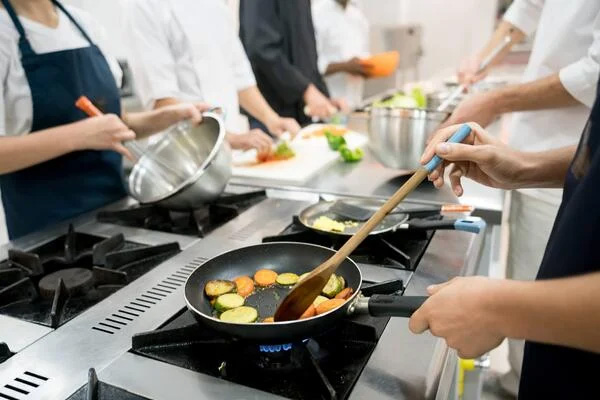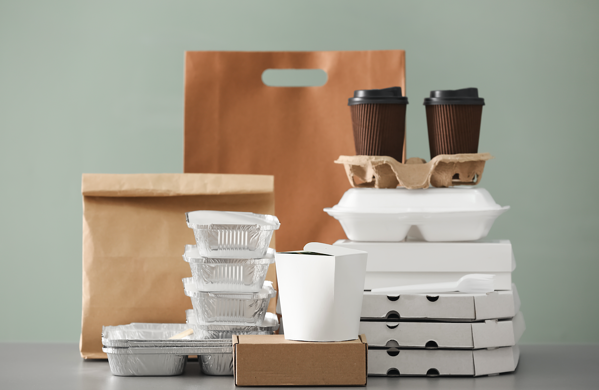
7 Tips When Opening a Ghost Kitchen
Ghost kitchens are essentially the “back-of-house” restaurant and food preparation buildout of ovens, ranges and refrigerators, populated with chefs and line cooks. Virtual brands or remote extensions of known brands, minus the standard brick and mortar storefront. They are stripped-down commercial cooking spaces, without a dine-in option, that cater specifically to online ordering and delivery.
According to Statista, the global ghost kitchen (also referred to as cloud kitchens or virtual kitchens) market size was estimated at 43.1 billion U.S. dollars in 2019 and is currently forecasted to reach as high as 71.4 billion U.S. dollars by 2027. This predicted growth is a direct result of the rise in available and enhanced technology, an increase in mobile food delivery services and a continued realignment of traditional, in-person dining restaurants moving their business models to more of a delivery-focused format.
Here are 7 Tips to Consider When Opening Your Ghost Kitchen
#1: Facility and Location Options
Selecting an industrial-style warehouse to move into may result in lower monthly rental expenses while, at the same time, eliminating the requirement and upkeep of the traditional restaurant storefront and dining space. Downtown locations often accommodate for a greater number of customers than are typically served from a suburban setting, and both the order rate and delivery rate remain consistently higher, offering a more strategic business opportunity.
#2: A Shared Space
Consider combining your foodservice operation with other virtual restaurants and move your business into a shared space that can accommodate multiple brands. The larger the space, the larger the number of individual kitchen “pods” that can occupy it and the greater the opportunity to share the associated overhead costs. Kitchen pods can be customized to your specific operation, maximizing efficiency, and often cost significantly less than purchasing a food truck, stand alone kitchen space or other real estate build.

#3: Conveyors for Convenience
If sharing a space with other brands, consider facilities that have installed a conveyor system designed to seamlessly transport each brand’s food orders to a communal staging area. These conveyor systems reduce the overall labor involved by eliminating the need to walk every order from one side of the warehouse space to the other when making them available for pickup by delivery services like Uber Eats and Grubhub. Ghost kitchens that focus on enhancing their workflow will see their foodservice operation running at peak efficiency and become more capable of expediting a greater number of online orders per hour.
#4: Kitchen Design Considerations
Room space (in general) and equipment space (more specifically) are two of the most important elements when it comes to designing your ghost kitchen. Consider worktables with installed casters, making them convenient to reposition throughout the kitchen and double as prep spaces or landing areas. Don’t limit your design by the number of available outlets needed for your prep equipment and never overlook the importance of walk-in refrigeration and appropriate freezer space; both of which help to ensure a reduction in loss of valuable food products.
#5: Don't Overlook the Prep Area
Designing the right size, set-up and accessibility of your prep space will help to minimize foot traffic across the kitchen while eliminating disruptive crowding between staff and third-party delivery personnel. Ensuring that uncooked food is kept separate from the delivery boxes the meals will eventually be packed in will significantly reduce the risk of unsanitary contamination. These are important details that should never be ignored and can be a game changer for the ghost kitchen business model.
#6: Focus on Your Workflow
Meals prepped for off-premise consumption utilize different workflow efficiencies and sanitation requirements than those of on-premise dining. From oven, to prep area, to delivery container, each stage of the meal must be addressed for optimal efficiency. Approach the configuration of your ghost kitchen from every angle and ensure that the layout of every square foot results in a more effectively streamlined operation. The smoother the operation, the more orders you will be able to fill.

#7: The Right Package for the Right Meal
Maintaining the integrity of your food is essential. It’s your product. The dedication you put into it shouldn’t be devalued when it’s time to be delivered to your customers. These meal containers should be durable, prevent leaking, resist breaking and ensure the individual food items are never mixed together. Emphasis should be placed on how the food is going to be consumed later and controlled differently than it would be at a dine-in restaurant.
Contact a Boelter Foodservice Associate to learn more about developing your own ghost kitchen and how it may positively affect your business.

Nik Ellickson has been working in the foodservice industry for more than 10 years. In his current role with Boelter Nik is a Director of Contract and Design.
Loved our ideas? Download a checklist of these tips so you can stay on track as you develop your ghost kitchen.